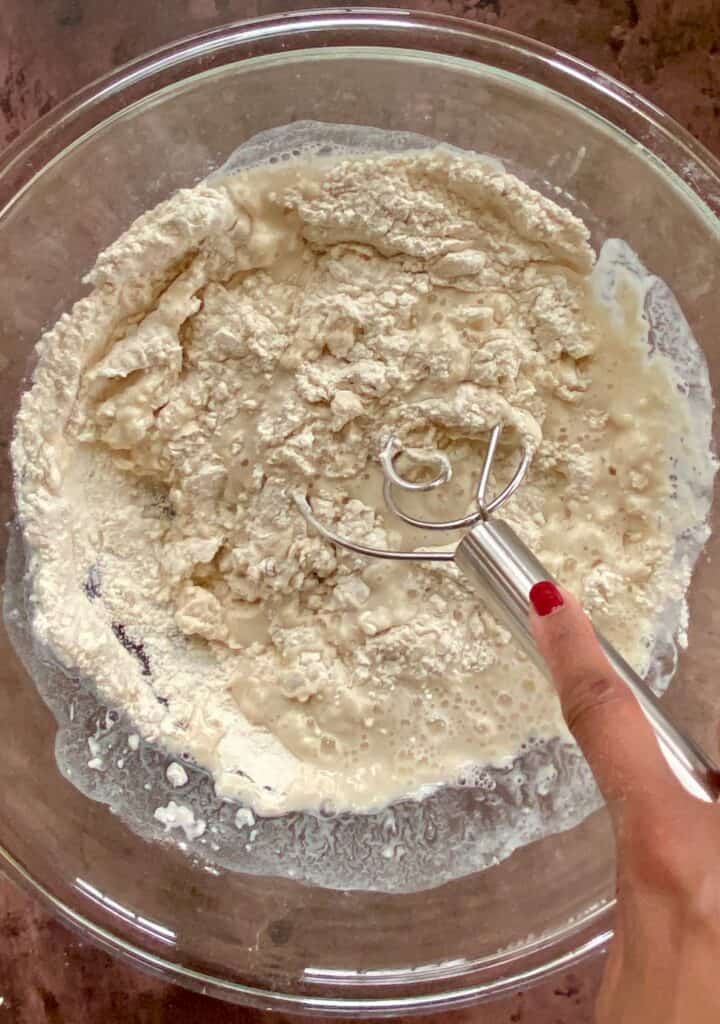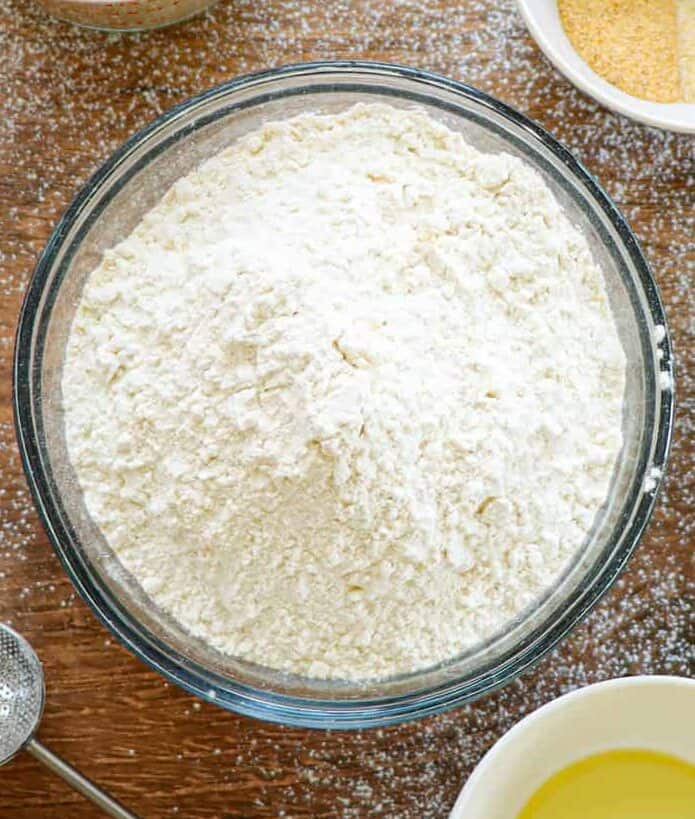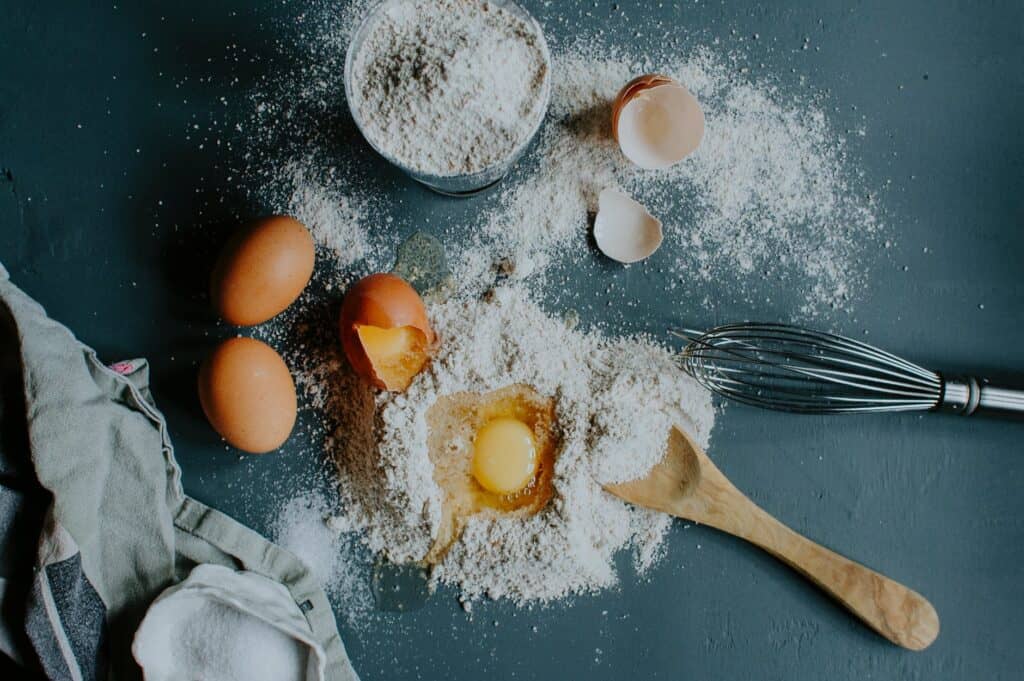Sifting? Really?
Yes! Sifting flour may seem like an extra step in the baking process, but it can actually make a huge difference in the end result of your baked goods. Here’s why:
- Sifting helps break up any lumps or clumps in flour, ensuring that it is evenly distributed and incorporated into your batter or dough.
- It aerates the flour, giving your baked goods a much lighter, melt-in-your-mouth texture.
In our too-rushed world, it’s easy to skip over the allegedly “old-school steps” because we think they’re outdated and have no place in the modern kitchen. But trust me, taking a minute to sift your flour can transform your baked goodies from the ones with several pieces left after a function (womp womp…) to the ones that people call dibs on, even before they’re served.
If it ain’t broke…
A Quick Look Back
Back in the day, sifting wasn’t just about getting air into your flour for baking; it played a crucial role in ensuring that certain elements, such as bugs (🤢) or other unwanted bits, were removed from the flour before it was used in baking.
However, beyond this very practical purpose, bakers stumbled upon an interesting revelation while sifting – the process of sifting made the flour lighter. This lighter flour, in turn, contributed to the creation of softer and airier baked goods, enhancing the overall texture and quality of the final products (cue happy dramatic music here). It’s fascinating how a simple act of sifting, initially used to clean flour, inadvertently led to a delightful outcome that bakers and consumers alike appreciate to this day.
What Sifting Really Does
Sifting is one of the secret sauces of baking:
- Light and Fluffy Bakes: That air you add? It expands when it heats up, giving you that oh-so-good airy texture. Think…Limoncello Layer Cake or even Very Vanilla Pound Cake!
- Mix Like a Pro: Sifting helps mix your dry ingredients evenly, so every bite is just right.
- No More Clumps: Want your cakes to be smooth and perfect? Sifting is the answer to avoiding those unwanted dense spots and clumps of dry product in your cakes and cookies.

Ingredients That Demand Sifting
Now that we’re on the subject of making our bakes lighter and better, some ingredients are just begging to be sifted. Take cocoa powder and bleached flours, for example. Cocoa powder, because of its fine and dense nature, tends to clump up like it’s holding onto secret baking grudges! And as for bleached flours, their processing makes them more compact and prone to sticking together.
**Want to learn more about the Five Flours that I Keep Handy in My Kitchen? Click here!
Cocoa Powder Clumps: The Culprit of Uneven Chocolate Goodness
When you skip sifting cocoa powder, those stubborn clumps can sail right through your batter, leaving you with uneven chocolate flavor in your bakes. Imagine biting into a cake expecting a smooth, rich chocolatey experience, only to find a lump of unsweetened cocoa powder. This is…not a surprise that anyone wants.

Bleached Flours and Their Sticky Situations
Bleached flours, light and fine as they are post-processing, tend to compress in storage. Failing to sift these guys can lead to dense, unappealing spots in your bakes—like finding tiny flour islands in your sea of cake. We’re aiming for melt-in-your-mouth textures, not a treasure hunt in your dessert!
My Go-To Method
Here’s a little tip from me to you: always measure your flour first, then sift. Why? Because sifting fluffs up the flour, and if you sift first, you might end up with less than you need.
Also, I sift just before adding my dry ingredients to my mixture. I want to take full advantage of all of the air that I’ve pumped into that flour mix!
Tools of the Trade
While there’s something charming about those hand-crank sifters, I’m all about using a fine mesh strainer. It gets the job done and can be used for a number of baking tasks.
- Want the fine mesh strainer set that I love? Try this set from OXO!
- I love a good old-fashioned hand crank like my Mommy had. This one satisfies my nostalgic side when I’m wanting to feel close to her in my baking kitchen.
These inexpensive tools make a huge difference in your baking. While I do get a small commission if you purchase either of these products, I truly believe in them for home bakers.
The Bottom Line
Skipping the sift often leads directly to uneven mixes and also to clumps in your finished baked goods. Clumps mean that your treats might not only look less appealing, but they could have inconsistent textures and flavors and fail to reach their full rising potential. The moral of the story? Sift, sift, and sift some more! It’s a simple step that ensures every bite is as perfect as the last.
Bringing sifting back into your baking isn’t just about following a step in a recipe; it’s about connecting with a practice our mamas and grandmamas did when creating those special family recipes that we know and love. It’s the difference between baking something good and creating something extraordinary.
Happy baking, friends! And remember, it’s all about enjoying the ride – and the delicious results. 🍞🎂🥐


